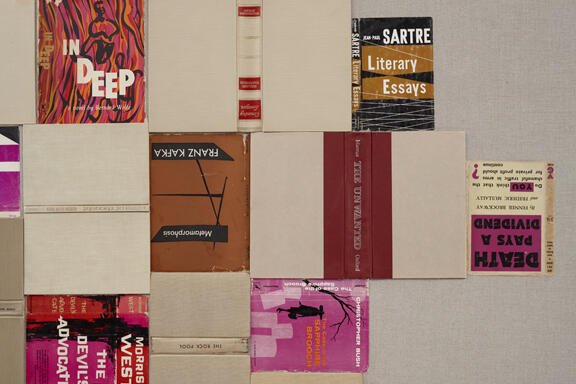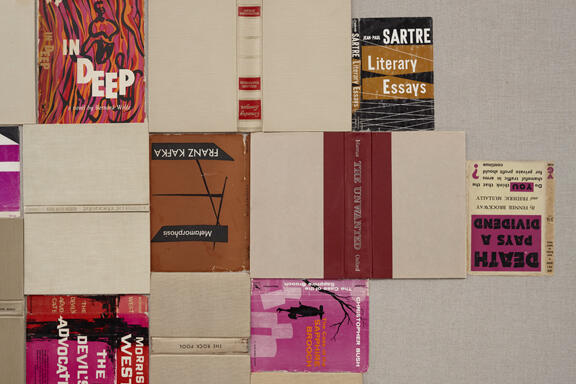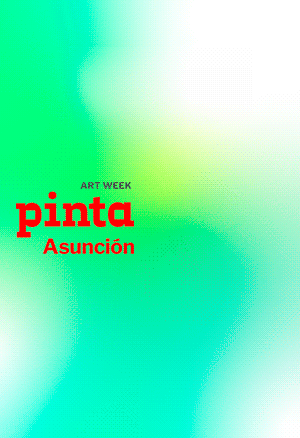Valeska Soares
Eleven Rivington, New York
Three large-scale canvases by Valeska Soares occupy the three main walls of Eleven Rivington – concurrently on view with the artist’s extensive exhibition of the same series at Fortes Vilaça gallery in Sao Paulo.

They are three unprimed linen canvases with geometric, reticular compositions, formed by collages of hardcover books and paper dust jackets organized as color and language indexes. Serialization, construction, repetition and creation of indexes that act at different levels of understanding and of interpretation are found at the basis of all these elements. First edition books from the artist’s personal collection become non-hierarchical on the canvases, generating new senses and interactions among them – and introducing different levels of reading and representation. The narratives and associations that emerge from the canvases depend on each viewer and are richly imbued with the sensuality of the found object and the narrative and poetical interest of the artist.
Sartre’s oeuvre cohabits with Kafka’s Metamorphosis or with works by Carlos Fuentes. Tennessee Williams holds a dialogue with George Orwell, Karl Schapiro or Kenneth Patchen while Thomas Mann does the same with Mary McCarthy or Mitchell J. Henderson. Like graphic stains on a page, the book covers do not propose a linear sense of reading, but rather a random exploration that produces the emergence of mental, abstract images, a parallel narrative induced by the musicality and the associations brought about by the books.
In the whole assemblage, the artist plays with experience, perception and memory, since in their pages the books condense not only one story, but also another story emerging from their own existence, from their being objects – which in turn is linked to the artist’s own life as a collector. Thus, Soares explores the complexity of memory and the individual and collective identity, subverting the use of the book itself.
In her work, Soares utilizes found or collected objects − which have picked up time, memory and experience − and manipulates them, subverting their original use. Literature is also a recurring subject in her work. Texts by Calvin or Barthes have served as raw materials and inspiration for large-scale installations and sculptural works. In this way, the artist reconstructs the physical and narrative structure of the texts, questioning their linear nature and moving closer to poetry and to the object.
It is the case of a second group of works, Edits, which accompanies the paintings. In these works, the artist edits Roland Barthes’ text A Lover’s Discourse, masking parts of it with black blots. Thus, a sort of concrete poetry, personal to the author, is created, where Soares explores the idea of text as image – appealing at the same time to matters related to memory and oblivion.
Soares’s works are included in important museum collections such as those of the Hirshhorn Museum and Sculpture Garden, Washington, D.C., the Guggenheim Museum, New York, the Carnegie Museum of Art, Pittsburgh and the Tate Modern, London. In addition, she has participated in biennials like Sharjah Biennial, the Sao Paulo Biennial and the Venice Biennale.





